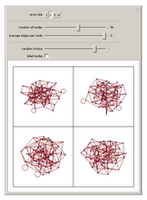Over on NussbaumOnDesign, there's an interesting thread on the role of designers in innovation. Designers thrive on risk, learn from it, and move on from it, so they're useful as models for innovation processes at companies. That's is the gist of a piece by IDEO folks summarized here on BusinessWire. Given this, design as a process reduces corporate risk during innovation, Nussbaum recaps:
Let me repeat--the design process cuts risk. When you do design (or innovation--whatever you want to call it), you use ethnography, prototyping and story-telling to develop a product/service/experience. These processes actually reduce risk. This is a fact that most CEOs simply do not get. It is far riskier to come up with a new technology in the labs, make it into a product and then throw it at consumers than it is to first start with your consumers to find out what they really need and want (the essence of design).
This admirable sentiment requires a definition of design as a process that involves good customer research, a definition not all would agree with, although I myself certainly prefer it and sell that as a service during design :-)
But for any good interaction designer, intuition counts, as well as the prototyping, empathy for the customer, focus on the desirable, and grounded research to inform that process. The risk in design is that there's never perfect and complete data, and at some point, you have to just follow that intuition and make something which might be a failure if one of a million details doesn't go right. And those final details are usually a team effort, whether the designer wants them that way or not: building a product is (usually) expensive and complicated, unless it's a garage Flash app.
There are a few provocative comments following up on this later on Nussbaum's blog,
suggesting that until designers put up their own capital, they are less risk-taking than their clients or the businesses that run with their ideas. A quote from the comment by Chris Conley:
Actually one could argue that designers simply ask their clients to take risks on them and their work. Few designers put their own capital at risk. I would also argue few understand the notion of investment and return which is how risk is manifest and monetized in business. Designers mostly have a cost mindset just like most business managers. An investment mindset is something that needs to be taught and is part of a innovation toolkit. Until designers put up their own capital (and not just the proverbial sweat equity) and take real equity positions in ventures, the risk is truly being born by someone else.
But there are other real risks for designers apart from personal capital, which Conley doesn't acknowledge: loss of credibility, reputation, credit (including financial reward), missed opportunities at other companies/agencies while betting on this job or client, and others that may be more important to an individual designer. Personal risk management is about all of that, too.
Edited to Add: Actually, after drafting the above and going to bed, I've woken up fairly incensed at the idea that designers should be putting up their own money in order to experience "real" business risk. Point one: Many of them do, because what they're motivated by is seeing their ideas in the world. They quit and go to startups, they do their own thing online, etc. This is fairly clearly "their own money." (At one company, when I couldn't get usability bugs taken seriously, I considered bribing engineers to fix the bugs I had filed. I was a hair away.) Point two: CEOs and other executives certainly don't put up their own money, and they're paid outrageously in comparison, so don't talk to me about money here, Mr Conley! Hmmph. Here are some articles on the pay issue, if you want to get educated about this:
Note especially that even if they "fail" they have enormous severance/retirement packages, suggesting there isn't much financial significance to their failure.








